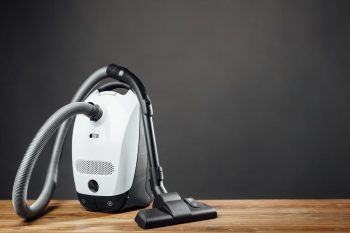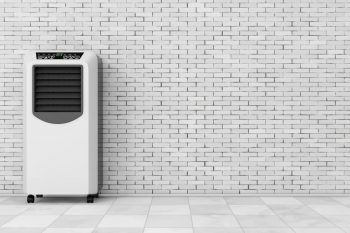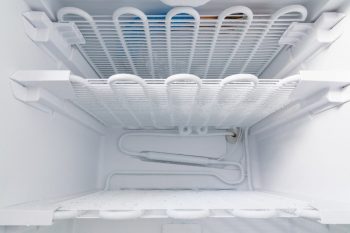
Draining a washer in your basement might seem like a daunting task, especially if you’re not familiar with the process. However, with the right knowledge, tools, and a little patience, you can successfully drain your washer in the basement. In this comprehensive guide, we’ll walk you through everything you need to know about draining a washer in the basement.
To drain a washer in the basement, first, turn off the power and water supply, then disconnect the water supply and drain hoses. You’ll need a washing machine with a built-in pump, a standpipe with a trap, a hose guide, a drain pan, a laundry sink with a pump, and PVC pipes. Connect the drain hose to the standpipe or utility sink, ensure it’s securely connected, and consider raising the washing machine if necessary. Regularly clean the drain filters and lint traps. Always ensure proper drainage, provide an air break, vent the trap, and follow building codes.
Preliminary Steps
Before you start draining your washer, there are a few preliminary steps you should take:
- Turn off the power: Unplug your washing machine from the electrical outlet or switch off the circuit breaker to avoid the risk of electric shock.
- Turn off the water supply: Locate the valves behind your washer and shut them off to stop the water supply to the machine.
- Disconnect the water supply hoses: Remove the cold and hot water hoses coming from the wall into the back of the washer. Be sure to place a bucket underneath to catch any water that may spill.
- Disconnect the drain hose: Carefully detach the drain hose from the pipe and hold it above the washing machine to prevent water from spilling out.
Tools and Materials Needed
To drain a washer in your basement, you’ll need the following tools and materials:
- Washing machine with a built-in pump: This pump should be able to pump water up to the required height.
- Standpipe with a trap: This is typically a 2-inch pipe.
- Hose guide: This is needed if you are feeding the drain hose into a sink.
- Drain pan: This will prevent leaks and water damage.
- Laundry sink with a pump underneath: This is needed if the washing machine pump is not sufficient to handle the water surge.
- PVC pipes, fittings, and necessary tools: These are for connecting the standpipe to the drain-waste-vent system.
Step-by-Step Guide to Draining a Washer in the Basement
Here’s a step-by-step guide to successfully draining a washer in the basement:
- Locate the drain: Find the nearest floor drain or a suitable drainpipe where you can connect the washer’s drain hose.
- Check the washing machine’s pumping capacity: Ensure your machine can pump water to the required height.
- Use a standpipe: Connect the drain hose to the standpipe or utility sink.
- Secure the drain hose: Make sure the drain hose is securely connected to prevent it from getting dislodged during operation.
- Consider raising the washing machine: If necessary, raise your washing machine on a platform to alleviate stress on the pump.
- Regular maintenance: Clean the drain filters and lint traps regularly to prevent clogs and ensure smooth drainage.
Safety Precautions
While draining a washer in the basement, it’s important to take certain safety precautions:
- Proper drainage: Ensure that the washing machine is connected to a proper drainage system to prevent environmental contamination and health hazards.
- Air break: All washer drains require an air break where the drain hose enters the standpipe to prevent water from overflowing into the washer if the drain backs up.
- Venting: Vent the trap by tying into the existing drain-waste-vent (DWV) system or by adding an air-admittance valve.
- Follow building codes: Many building codes require a washing machine to drain into the wastewater system. Ensure your setup complies with local health and safety regulations.
Troubleshooting Tips
If your washer won’t drain, try these troubleshooting tips:
- Perform a master reset: Unplug the washer for a minute, then plug it back in and try running a cycle again.
- Check the drain hose for clogs or kinks: Ensure that the drain hose is not kinked, crushed, or obstructed at the outlet or inlet ends.
- Inspect the drain pump and filter: Check for any obstructions in the drain pump and filter.
- Look for a clogged drain: Run a plumber’s snake through the drain opening to see if you can clear any blockages.
By following these steps, you can successfully drain a washer in your basement. Always remember to follow local building codes and consult a professional plumber if you’re unsure about any aspect of the installation process.
Frequently Asked Questions
Why do I need an air break in the drain hose?
An air break prevents water from overflowing back into the washer if the drain backs up. It’s a safety feature that ensures the water level in the washing machine doesn’t exceed its capacity due to a blocked drain.
Can I drain my washer into a floor drain in the basement?
Yes, you can drain your washer into a floor drain. However, it’s important to ensure that the drain is equipped to handle the volume of water discharged by the washer. Also, local building codes may have specific requirements for washer drainage, so it’s essential to check these before proceeding.
What kind of pump do I need for a basement washer?
The pump you need for a basement washer depends on the height the water needs to be pumped to reach the drain. The washing machine’s built-in pump is often sufficient, but if the drain is significantly higher than the washer, you may need a laundry sink with a pump underneath, or a separate, more powerful pump.
How often should I clean the drain filters and lint traps?
This varies depending on the usage of your washing machine. However, it’s a good practice to clean the drain filters and lint traps at least once a month to ensure smooth drainage and prevent clogs.
Is it necessary to raise the washing machine on a platform?
Raising the washing machine on a platform is not mandatory but can help alleviate stress on the pump, especially if the drain is significantly higher than the washer. This setup can also make maintenance easier. However, it’s important to ensure that the platform is sturdy and stable to prevent the washer from tipping over.












